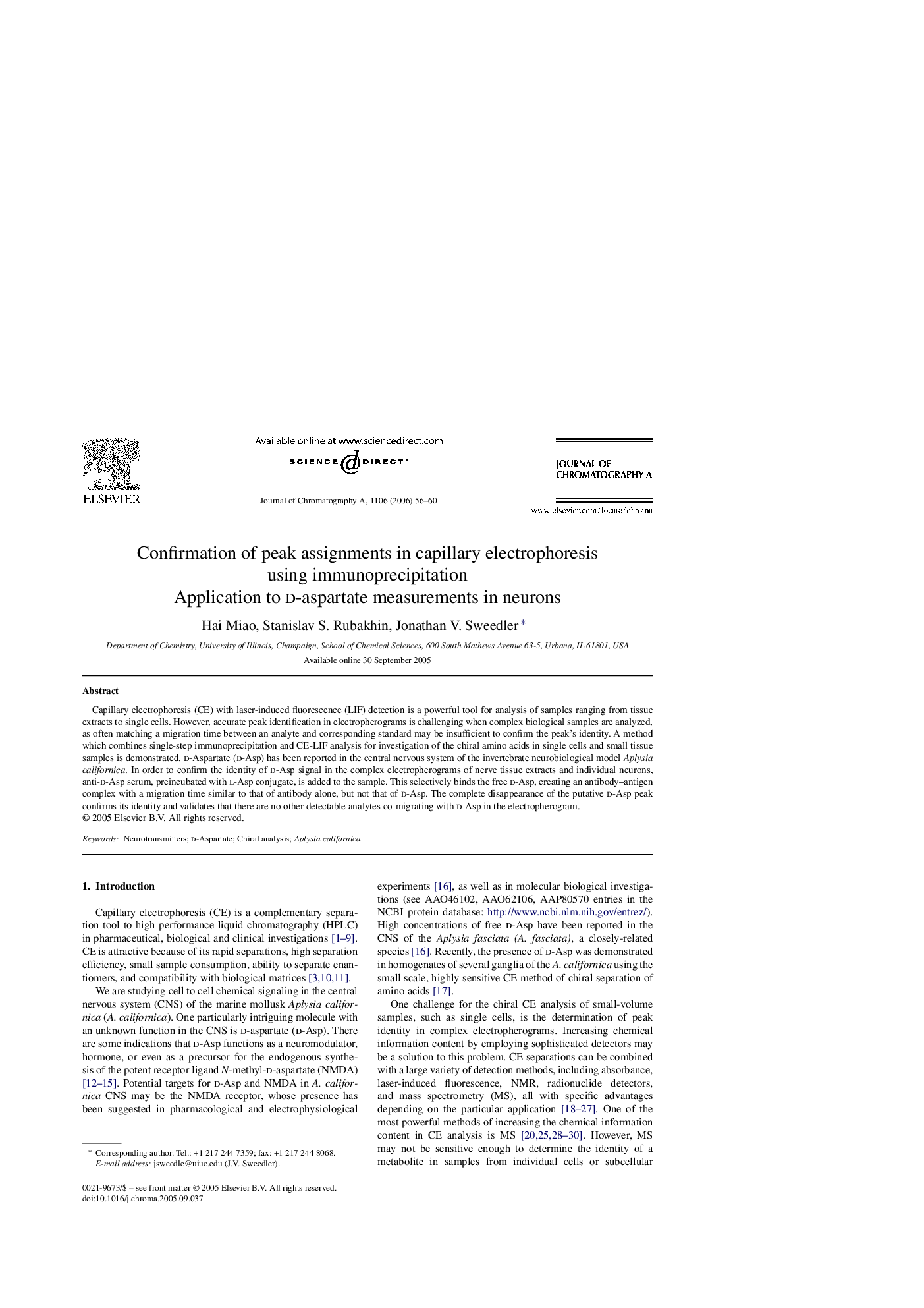| Article ID | Journal | Published Year | Pages | File Type |
|---|---|---|---|---|
| 1210074 | Journal of Chromatography A | 2006 | 5 Pages |
Capillary electrophoresis (CE) with laser-induced fluorescence (LIF) detection is a powerful tool for analysis of samples ranging from tissue extracts to single cells. However, accurate peak identification in electropherograms is challenging when complex biological samples are analyzed, as often matching a migration time between an analyte and corresponding standard may be insufficient to confirm the peak's identity. A method which combines single-step immunoprecipitation and CE-LIF analysis for investigation of the chiral amino acids in single cells and small tissue samples is demonstrated. d-Aspartate (d-Asp) has been reported in the central nervous system of the invertebrate neurobiological model Aplysia californica. In order to confirm the identity of d-Asp signal in the complex electropherograms of nerve tissue extracts and individual neurons, anti-d-Asp serum, preincubated with l-Asp conjugate, is added to the sample. This selectively binds the free d-Asp, creating an antibody–antigen complex with a migration time similar to that of antibody alone, but not that of d-Asp. The complete disappearance of the putative d-Asp peak confirms its identity and validates that there are no other detectable analytes co-migrating with d-Asp in the electropherogram.
